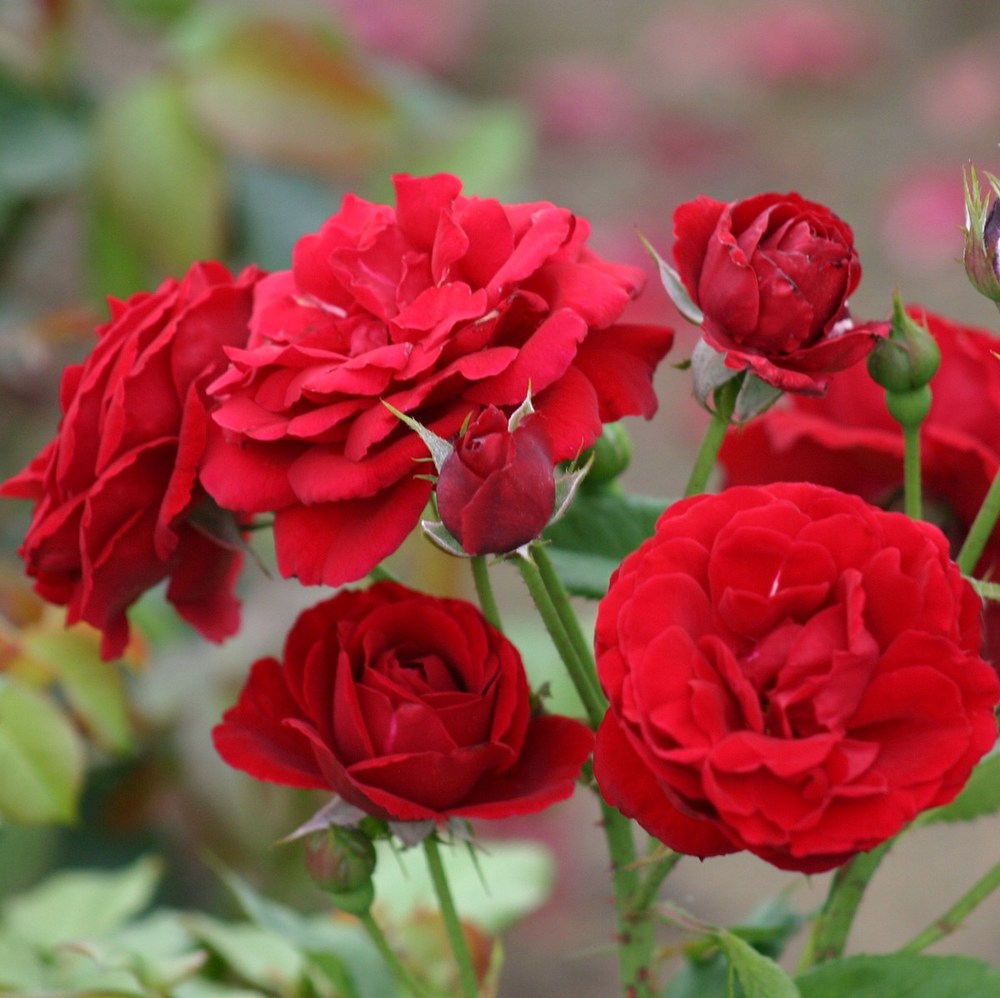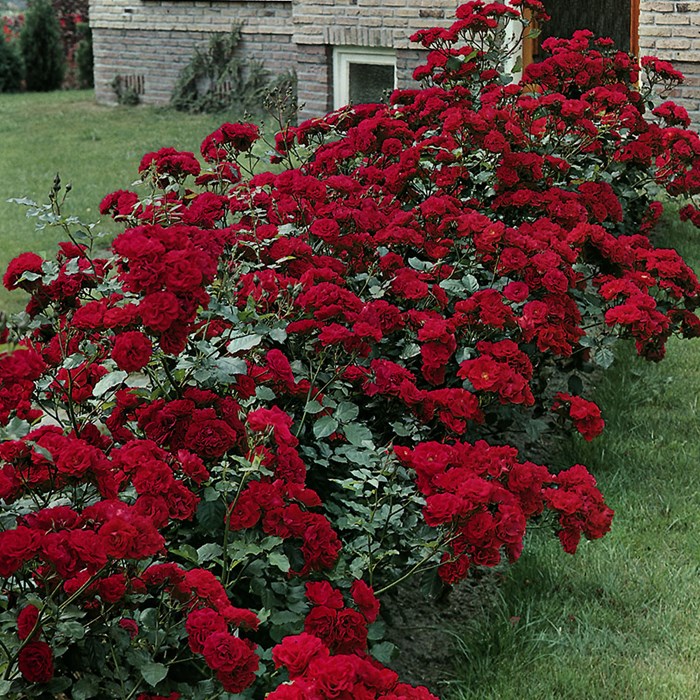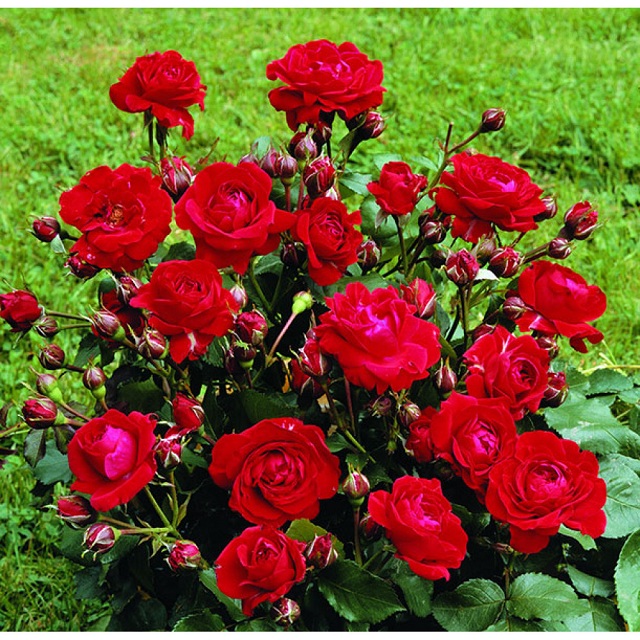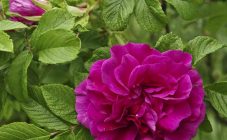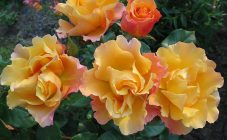Content:
The rose is considered by many to be the queen of the garden. Any of its varieties is a wonderful specimen in the collection of garden flowers. Floribundas are very popular. They were obtained by crossing tea and polyanthus roses. This species inherited the best features from its “parents”: cold resistance and excellent immunity were inherited from polyanthus roses, and a huge variety of shades from hybrid tea roses. In addition, the floribunda rose has a wonderful aroma and has a long flowering period. No wonder the name of the species is translated as "profusely flowering".
The brightest representative of the floribunda is the Nina Weibul variety. The originator of the variety is Poulsen. This type of Danish selection was bred over 50 years ago. During this time, she has gained many fans. The variety is loved by many gardeners for its high decorative effect and unpretentiousness. It is common in Europe and Russia. It is used in group plantings and to create single compositions. Nina Weibul is also suitable for alpine slides and hedges. Rose Nina Weibul will always be a bright accent in any composition.
Description of the variety
Rose Floribunda Nina Weibull (Rose Floribunda Nina Weibull) is a perennial, rather branched low shrub that grows up to 75 cm. The stems are covered with numerous thorns. The leaves are dark green, glossy. Terry flowers with a diameter of 5-6 cm, which are collected in inflorescences of 5 pieces. The buds are bright red and do not fade in the sun. One branch can have up to 30 pieces. The rose blooms almost continuously all summer (if you cut the shoots at different heights) and does not lose its decorative effect after rain.
Floribunda planting
To grow a rose of the Nina Weibul variety on your site, you need to take into account some nuances:
- The optimal planting time is spring (the first half of May, when the ground is already warm enough).
- The place is chosen protected from drafts, sunny. It is better to grow a rose at a small elevation, since the plant does not tolerate stagnant water.
- Roses prefer moist, fertile and well-drained soil. The acidity of the soil should be in the range of 5.6 to 7.3 pH. Crushed stone or gravel, which is poured into the bottom of the planting pit, can act as drainage.
- A spacious planting pit is prepared for the rose so that the roots of the seedling can freely settle in it.
- A soil mixture is used from garden soil, sand, humus and peat. Superphosphate is introduced.
- For seedlings with an open root system, you need to prepare a clay talker and soak the roots in it for 3-4 hours before planting.
- The grafting site can be buried 2 cm in the ground. This will help to activate the formation of additional roots and, accordingly, lead to better rooting.
- After planting, the seedlings are watered abundantly.
- The trunk circle is mulched using peat.
Rose Care Nina Weibull
Rosa Nina Weibul is considered one of the most unpretentious in care, however, in order to get abundant and long flowering, you need to follow the basic agrotechnical techniques.
Roses are fed twice during the season. In the spring, before the buds appear, nitrogen fertilization is applied. In the summer, the rose needs to be fed with phosphorus-potassium fertilizers. They give strength to the plant and stimulate flowering well.
An important agricultural technique for caring for floribunda is pruning, both formative and sanitary. The main procedure occurs in the spring (before the opening of the kidneys). All damaged stems are removed. Flowers are formed on the shoots of the current year, therefore, it is recommended to prune all branches older than two years of age. This ensures the continuous flowering of the rose every year. For an earlier flowering, medium pruning is carried out, leaving 5-7 buds on each branch.
Sanitary pruning is carried out in the fall and spring. During this procedure, all damaged, weak branches are removed. It is also recommended to remove shoots growing inside the bush, as they create unwanted shadow. Pruning in the fall will prepare the bush for winter. The bush becomes more compact and easier to cover. Pruning is carried out in late autumn when a steady cold snap sets in.
Timely removal of faded inflorescences during the season stimulates re-flowering.
The soil in a flowerbed with roses must be loosened, as this ensures air exchange, improves the soil and increases moisture absorption. The procedure should be carried out the next day after watering or rains in order to break the dry crust on the surface of the substrate. Simultaneously with loosening, weeds are usually removed.
Preparing the plant for winter
Rose (variety Nina Weibul) is considered winter-hardy, but in regions with a harsh climate it needs shelter. In the south, an adult plant can winter without it, but in central Russia, and even more so to the north, one cannot do without warming for the winter.
Advantages and disadvantages of the variety
Experienced flower growers include the pluses of choosing the Nina Weibull rose variety:
- long and abundant flowering, almost until the first frost;
- high frost resistance;
- high resistance to pests and diseases;
- unpretentious care.
Disadvantages of the variety:
- subtle, barely perceptible aroma;
- many thorns on the shoots.
The Nina variety is suitable for both amateurs and professionals. It is often used by landscape designers to create bright accents in compositions, as this rose is able to delight with its bright, abundant flowering for many years!
